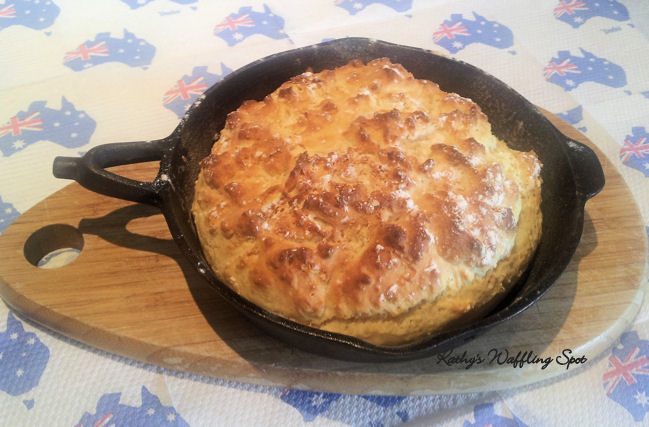
Traditional Damper
A lot of damper recipes are almost a scone recipe. This is a truer damper recipe, that anyone could make out camping with very basic supplies.
Ingredients
- 2 cups Self raising flour
- 1/2 to 3/4 cups Milk
- 1/2 teaspoon Salt
Instructions
- Heat your oven to 210*C. It needs to be hot.
- Measure the flour into a bowl and add salt.
- Mix in with a knife 1 1/2 to 1 2/3 cup of milk. Start with the lesser add more if needed. It will be a sticky mix. Make sure all flour is incorporated.
- Pour the batter into a greased and floured pan or tin. (I use a small cast iron frying pan. I take out the wooden handle). My pan has an approx diameter of 18cm. Sprinkle a little flour on top.
- Put into the hot oven for approx 25 to 30 minutes or until browned. Knock on the top to get a hollow sort of sound. Let cool for 5 mins. Break apart or slice and serve with butter and golden syrup, honey or jam.
Notes
My only concession to the really true Australian damper is I use milk, the original uses water.
No you don't need sugar.
For a sweeter damper add sultanas or chopped dates before mixing in the milk.
For a savoury damper add some herbs and grated cheese or small cheese chunks before you add the milk.
Make in a loaf tin, same time as above. Slice to serve.
Pop tablespoons of dough onto a lined tray and make individual dampers. Check time about 15-20 minutes.
Sliced leftovers makes great toast in the toaster for breakfast.
Yes this can be frozen.

2 comments
I have to question how “traditional” it is to use self-raising flour.
Author
Sadie I guess how ‘traditional’ this damper is depends on how far back you go. For absolute traditional damper you’d go back to the Australian Aboriginals where they ground native seeds, nuts and roots and made into a dough then baked on an open fire. Both bi carbonate of soda and cream of tartar were invented before Australia was settled, so those would have been used as raising agents instead of the now easier baking powder, which was invented in the 1840’s. So I guess with self raising flour (2 teaspoons of baking powder to 1 cup of plain flour, sifted) this traditional recipe goes back to 1840 🙂